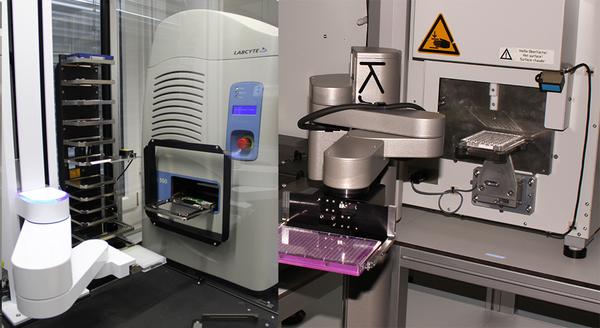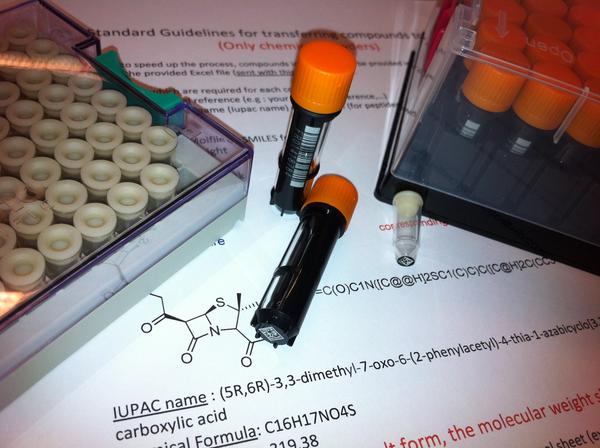Turning bacterial defenses into suicide buttons

EPFL's Biomolecular Screening Facility © Gerardo Turcatti (EPFL)
Scientists from UNIGE working with EPFL’s Biomolecular Screening Facility discover a way to fight bacteria with their own weapons.
Bacteria use toxin–antitoxin systems to respond to stress, such as antibiotics. The system is a set of two or more closely linked genes on the bacterium’s plasmid that encode proteins: a “poison” and its corresponding “antidote”. The toxin-antitoxin systems give rise to so-called persistent cells, which can resist antibiotics. One such system is called HigBA, and is used by both pathogenic and non-pathogenic bacteria. Exploring the HigBA, scientists from the University of Geneva, in collboration with EPFL, have found how to turn it from a defensive mechanism into a suicide button for resistant bacteria. The discovery, which could lead to new treatments of bacterial infections, is published in Nature Microbiology.
The study was lead by Clare Kirkpatrick at Professor Patrick Viollier’s group at UNIGE, in collaboration with Gerardo Turcatti’s group at EPFL’s Biomolecular Screening Facility. The scientists exploited a peculiarity in the HigBA toxin-antitoxin system of Caulobacter crescentus.

In general, bacteria use toxin-antitoxin systems to develop a resistant population of cells. The antitoxin, often a transcription factor, is less stable than the toxin, but is more highly expressed, fixes on the toxin protein and prevents it from acting. When environmental stress disrupts this balance, the toxin becomes activated and destroys the cell.
The antitoxin protein also acts as a repressive transcription factor, preventing the toxin and antitoxin genes from being expressed. But the HigBA system is also regulated by another transcription factor that represses the antitoxin gene severely. This transcription factor is activated specifically by stress due to DNA damage, which means that the antitoxin gene is mostly regulated by DNA damage too rather than general stress.
The UNIGE scientists found that this peculiarity of the HigBA system allowed them to artificially inactivate the antitoxin gene – a normally impossible task. By giving the bacteria antibiotics that cause DNA damage, they were able to remove the repressive effect of the DNA damage-responding transcription factor, causing unrestricted killing activity of the toxin and turning the HigBA system into a “suicide button".
Quinolone antibiotics were identified by small-molecule screening at EPFL’s Biomolecular Screening Facility (BSF-ACCESS), under funding from the NCCR Chemical Biology. The funding came after the screening project submitted by Kirpatrick-Viollier was selected during the first call for screening proposals launched by the NCCR Chemical Biology at the end of 2013. In addition, BSF-ACCESS members actively contributed to the project by designing, validating, performing, and analyzing the data from the screening assays. A total of 1280 known drugs were used, of which 13% are antibiotics. Each compound came from the Chemical Collections stored at BSF-ACCESS, containing about 100'000 compounds.

As a result of the BSF’s work, lead researcher Clare Kirkpatrick was able to detect five previously unknown antibiotics that can interact with the pathway under study, and validated their inhibitory properties. A pivotal point in the study came when they researchers focused on two of the molecules, belonging to the chemical family of quinolones.
“Our discovery can change the way we fight bacterial infection. Instead of using chemical warfare, i.e. antibiotics, we could force bacteria to turn their weapons on themselves,” says Patrick Viollier.
Reference
Kirkpatrick CL, Martins D, Redder P, Frandi A, Mignolet J, Chapalay JB, Chambon M, Turcatti G, Viollier PH. Growth control switch by a DNA damage-inducible toxin-antitoxin system in Caulobacter crescentus.Nature Microbiology. DOI: 10.1038/nmicrobiol.2016.8